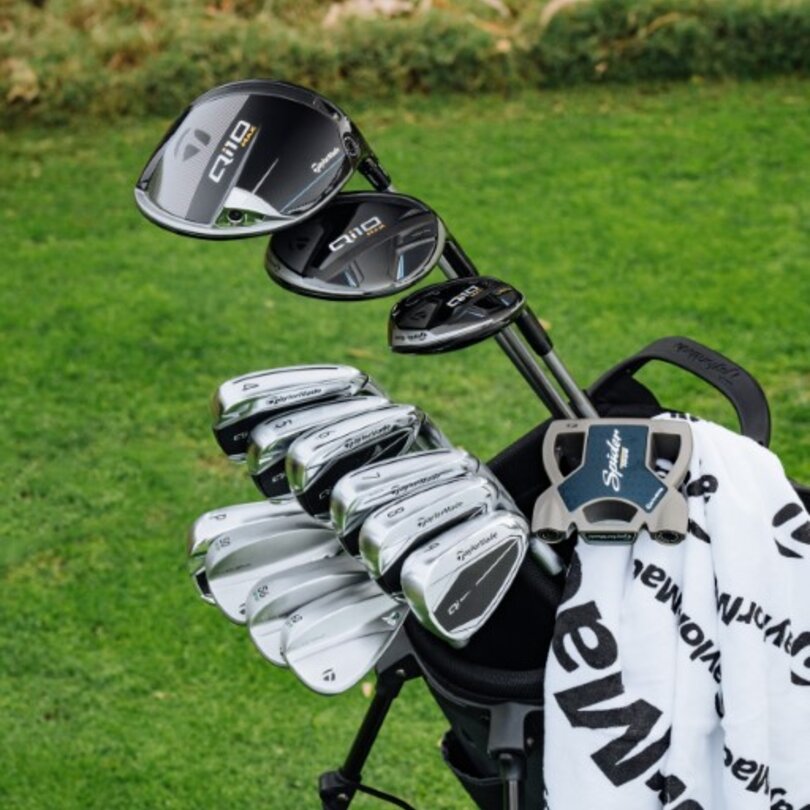The Different Clubs
The Long Game
Driver
The driver is the longest club in your bag, both literally and figuratively. With the largest clubhead and the longest shaft, it is ideal for the longest distances from the tee. The driver is not the easiest club to handle. Beginners are advised to start with irons before investing in a good driver.
Fairway Woods
Fairway woods, such as the 3-wood and 5-wood, are essential for long shots from the fairway. They are smaller than drivers but have a similar shape. The 3-wood is perfect for long shots from the fairway, while the 5-wood has more loft and is suitable for shorter distances or tricky positions.
A Solid Foundation: Irons and Hybrids
Irons
Irons form the backbone of your golf bag. A full set usually consists of irons numbered from 3 or 4 to 9. The lower numbers (3-5) are designed for longer distances, while the higher numbers (6-9) have more loft for accurate shots to the green. For beginners, the 6-iron to 9-iron are often sufficient to start with, as they are easier to hit.
Hybrids
Hybrids combine the characteristics of woods and irons, offering the best of both worlds. They are particularly useful for shots from the rough or other difficult situations. Many golfers replace their long irons (2-5) with hybrids due to their extra forgiveness and ease of use. For beginners, hybrids are an excellent choice because they make the game easier.

More Clubs
Important: Wedges
Pitching Wedge (PW)
The pitching wedge is typically used for shorter shots to the green. This club has a loft of about 45 degrees and is one of the most versatile clubs in your bag.
Sand Wedge (SW)
The sand wedge is designed to get out of bunkers and has a higher loft, usually around 56 degrees. This club helps you get the ball high into the air and stop quickly on the green.
Lob Wedge (LW)
For even higher and shorter shots, such as hitting over obstacles, the lob wedge with a loft of about 60 degrees is ideal. This is a specialist club mainly used by advanced players.
Essential: The Putter
The putter is the club you will use most often, as it is used to roll the ball into the hole once you are on the green. There are different types of putters, such as blade, mallet, and mid-mallet, each with their own advantages and disadvantages. It is important to choose a putter that feels comfortable and gives you confidence when addressing the ball. Due to the wide variety of options, it is advisable to seek expert advice when selecting a putter.
Material Choice: Grip, Shaft, and Clubhead
Grip
The grip is essential for good control over your shots. A grip that is too thin or too thick can negatively impact your swing. Have your grip size checked by one of our golf experts to ensure it fits perfectly in your hands.
Shaft
The length and flexibility of the shaft are also important. Steel shafts offer more control, while graphite shafts are lighter and help increase swing speed. Beginners can benefit from graphite shafts due to their lighter weight and added comfort.
Clubhead
Clubheads are usually made of stainless steel or titanium. Stainless steel is cheaper and offers good forgiveness, while titanium is lighter and helps achieve longer distances. Nowadays, titanium clubs are less common. Various steel treatments can produce different types of clubheads. For woods and hybrids, very light materials such as carbon or other composites are used today to further improve performance.
Conclusion: The Perfect Combination
Assembling the ideal golf bag is a personal journey that depends on your playing style, skills, and preferences. It is advisable to try out clubs and seek advice from our professionals to make the best choices. With the right combination of clubs in your bag, you can elevate your game to a higher level and fully enjoy every round of golf.


 cookies
cookies